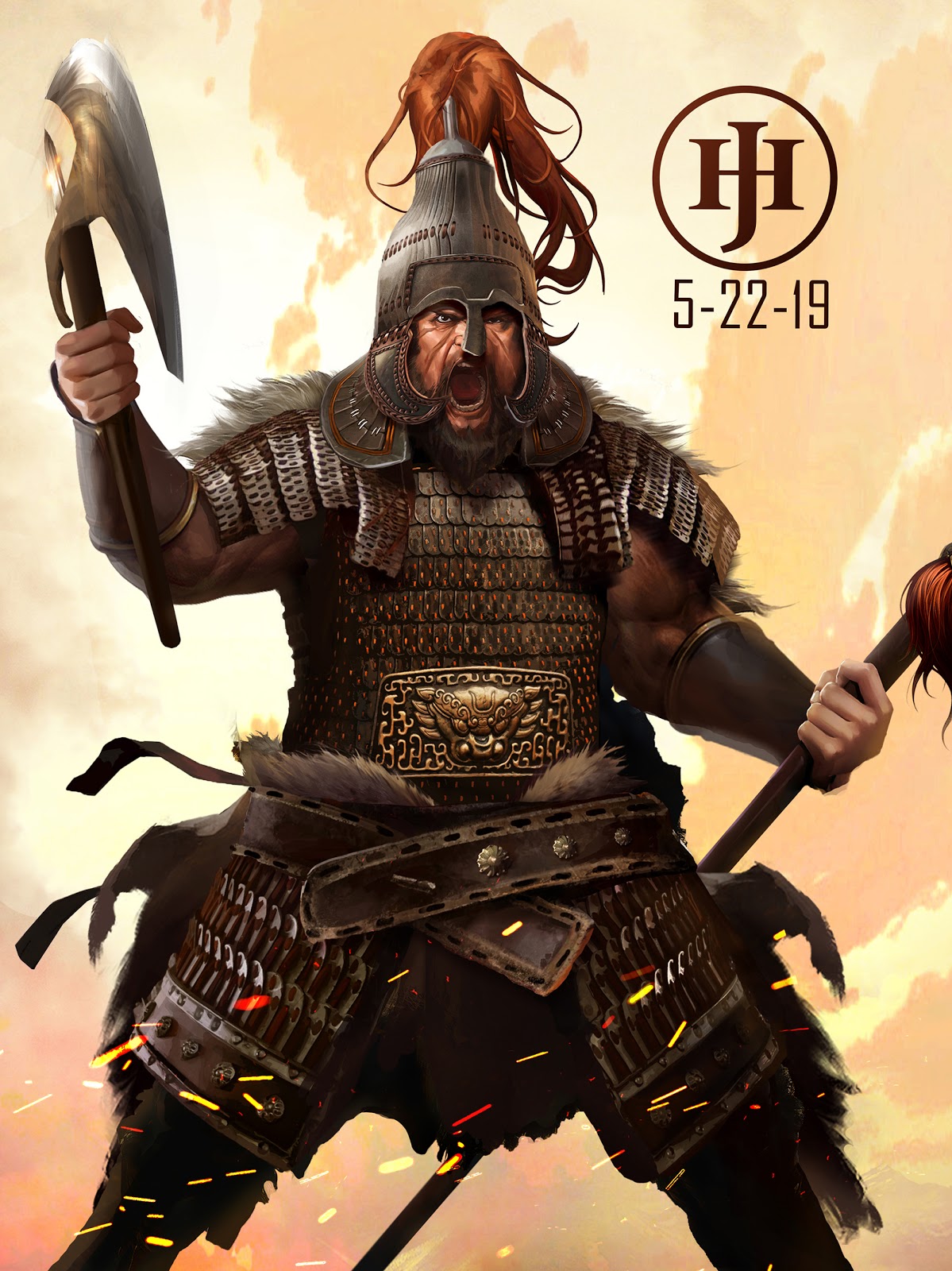Rouran Warrior 阿瓦尔勇士, 柔然可汗国
Buyao 步摇 ("step shaker" lit. step sway ) headdress worn by Xianbei women. Like the
ancient Scythians, noble Xianbei women wore ornate gold or gilt bronze jewels in the
shape of trees or antlers that formed trees on their head. The gilded leaves
are crafted separately and would shake whenever the women moved~
hence the name of step shaker. Both the reindeer sound and
deer are seen as auspicious by steppe cultures.
As such they were perhaps the first people to use the title of "Khan" or "Khagan". For two centuries, they would rule as a powerful force in Central Asia, uniting a colossal host of powerful tribes under their banner. During these centuries they were a constant threat to China's Northern Wei dynasty. However, the Rouran's reign would be suddenly overthrown by the insurgency of one of their vassal tribes- the Göktürks.
Reconstructed skull of a Pannonian Avar from Hungary showing distinctive Asiatic features including prominent epicanthal folds.
→ ☯ [PLEASE SUPPORT ME @ PATREON] ☯ ←
Thank you to my Patrons who has contributed $10 and above: You made this happen!
➢ ☯ Vincent Ho (FerrumFlos1st)
➢ ☯ BurenErdene Altankhuyag
➢ ☯ Stephen D Rynerson
➢ ☯ Michael Lam
➢ ☯ Peter Hellman

















Comments
The Rouran might have ruled a large region in the traditional domains of the Altaic peoples but they might be pretty distinct in their own right. Not sure how much was mixed with the Hunnic customs- which were contemporaneous to them. Although as a tangent I do find it interesting that those who repeatedly ended up inhabiting the area of modern Hungary traced their lineage to the steppes. The Pannonian Avars were migrants from the east and so does the Magyars, before the Magyars settled in the area of modern Hungary they were one of the tribes from the steppes. It make some sense as they are very distinct from all of their neighbors.
There are a lot of theories on the ethnicity of the Rouran. Vovin made good arguments in favor of Rouran being a non-Altaic, totally extinct language isolate, based on the very small amount of existing information on them.
(For example, compare the word for 'Horse', a pretty basic unit to the North Asian cultures:
Middle Chinese: "Mɣach"
Mongolian: "Moriin"
Turkic: "At"
Rouran: "Yund" )
So even the word for Horse is strikingly different from all bordering language groups, and yet there are other words and grammatical forms like this.
The Rouran were descended from the slaves of the Wei rulers' ethnic group. They and their rise to power were fiercely hated by the Wei in China, who called them 'wriggling worms' -- so it makes sense that very little about their culture/language was recorded. Therefore, other sources must be used. From these "other sources" - namely, inner asian linguistics, Vovin demonstrated that the short-lived Rouran hegemony may have left a significant impact on neighboring peoples. This was a "Dark Matter" situation -- the language influence was apparent (in words like "Khan" and "Khatun" no less), but the source of the influence was unknown. The suggestion that this unknown actor was Rouran, stuns me and should be important to historians of China and Inner Asia.
This is an incredible paradox: the wide ranging impact and yet the paucity of information. It really adds to the mystique of these people, but it also results in some fairly extravagant claims. For example: yes, the Pannonian Avars certainly had a sizable East Asiatic element. But I tend to doubt claims of their Rouran ancestry when we already know so little about the Rouran.